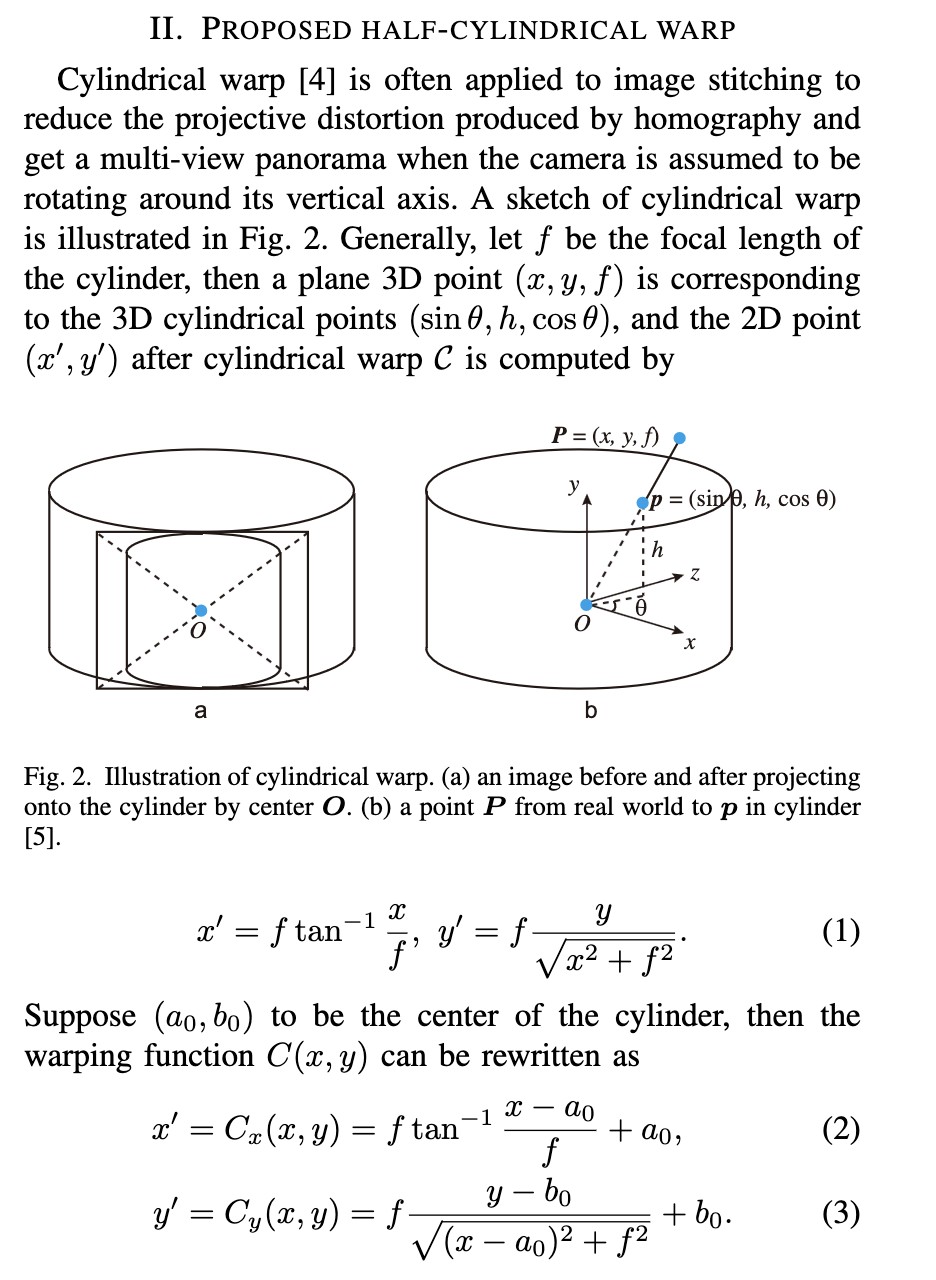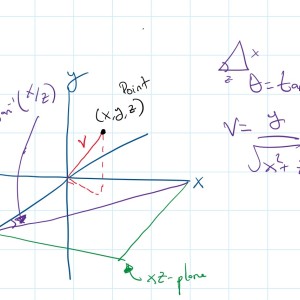Understanding Cylindrical Warping Equations and Derivation
Hello,
I would really appreciate some help understanding the derivation for x' and y' for Equation (1), Equation (2), and Equation (3). 
I recall that to convert Cylindrical Coordinates to Cartesian Coordinates it would be x = r × cos(⊖), y = r × sin(⊖), z = z. Also, to convert Cartesian Coordinates to Cylindrical Coordinates it would be r^2 = x^2 + y^2, ⊖ = arctan(y/x), z = z.
Here is a link to the article I was reading: https://arxiv.org/abs/1803.06655
Also, is the focal length, f supposed to be the radius? I would also appreciate it to see how they derived Equation 1. Thank you so much!
Answer
- The questioner was satisfied with and accepted the answer, or
- The answer was evaluated as being 100% correct by the judge.
1 Attachment
-
Let me know if you need any clarifications.
-
Hi Erdos, thanks for your help. I'm still confused about the position of x,y,z in the real world. Can you draw a graph? Also, just to confirm v is an angle as well? Also, can you talk more about the focal length?
-
-
Hi again, Erdos, also I wanted an explanation regarding Equation (2) and Equation (3) of my post as well. Thanks!
-
I added more details about (2) and (3).
-
-
Hi Erdos, I have added a file where I'm trying to draw visualize the equations - This relates to my first reply
-
See the graph in the attached file.
-
Thanks, Erdos! That was extremely helpful!
-
-
Erdos, I promise that I will provide you a tip! May you please explain: Since the focal length is f, i.e. an square of length 1 is mapped to a square of length f. Thus all angles should be multiplied by f. Also, once again, just to confirm v is an angle as well? I ask this because you state: Note that these two quantities represent angles. Once again, thank you so much!
-
v is the slope of the line OP and not an angle, but intrinsically it represents the tangent of the angle phi i mentioned above.
-
-
The authors do not clearly define what they mean by focal length. However, in this context, it means that a point with coordinates (theta, v) is mapped to a point (f theta, f v). This means that both theta and f are expanded by a factor of f.
-
Hi Erdos, apologies if you have answered this question, but why do we want to multiply the focal length to the equations you derived? Also, dumb question, but for the slope of the line P, why can't we use the Pythagorean theorem like we did for the xz-plane? Also, let's say for example that the focal length is related to a camera matrix - How does this change the problem? Thanks!
-
For the slope of the line P, we actually use the Pythagorean theorem on the triangle OPA. I don't have time to answer your other questions about the focal length. It almost requires writing a comprehensive tutorial. Please note that this problem has taken me over 1.5 hours, I am only getting paid like $16 (including the tip). This is an advanced question, and my time is too valuable to be working for lower than minimum wage.
-
If you have further questions, you can create a new post with a good and fair bounty.
-
-
One more thing, may you add another drawing of where x' and y' would land on the graph? Thank you!
- answered
- 2027 views
- $10.00
Related Questions
- Solve the Spherical Triangle
- Create a Rotation Matrix for 3 point x,y vectors
- A generator at a regional Power Station produces an alternating voltage, according to the function, 𝑉 below:
- Need formula help
- Gear - Wing Spar Linkage
- Is $\sum_{n=1}^{\infty}\frac{\arctan (n!)}{n^2}$ convergent or divergent?
- Evaluate $\int_0^{\frac{\pi}{2}}\frac{\sqrt{\sin x}}{\sqrt{\sin x}+\sqrt{\cos x}} dx$
- Simplify this expression


